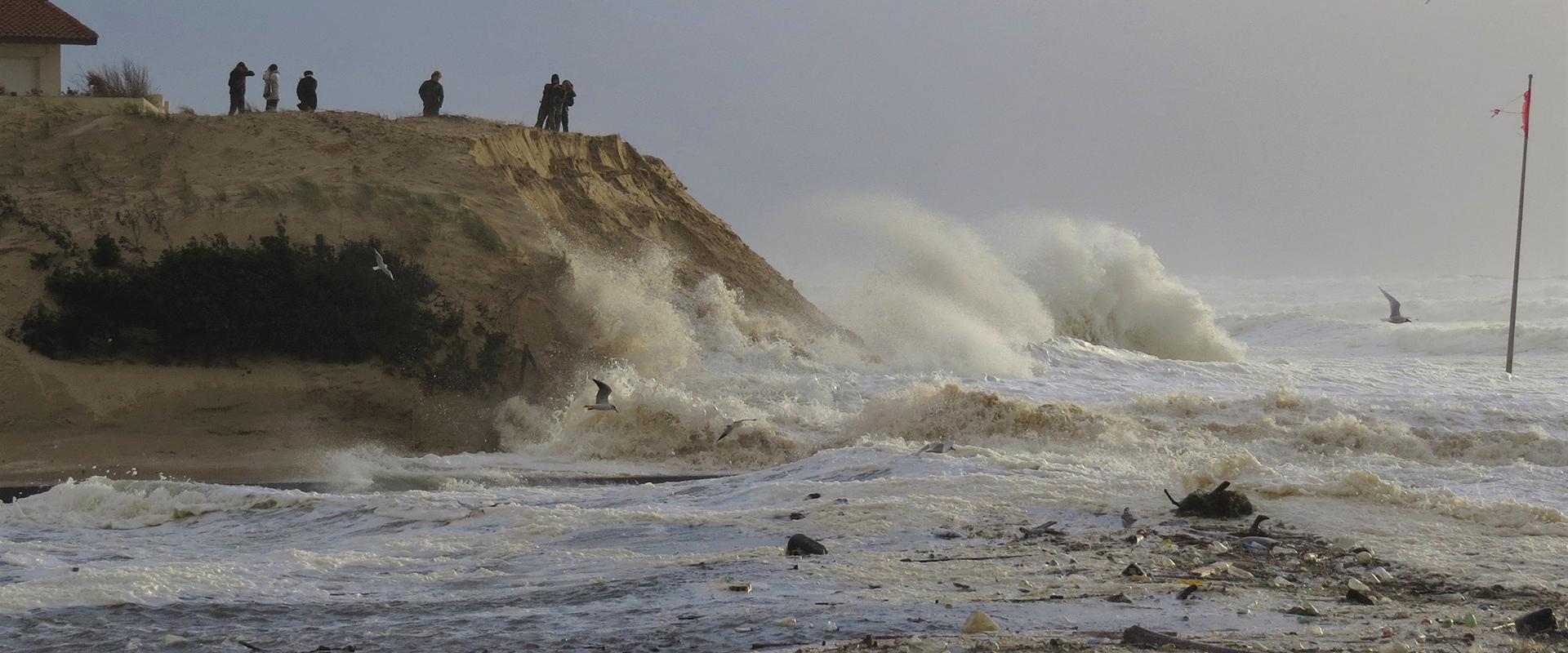Key figures
-
50.00%of all storm surges are due to waves on certain parts of the coastline
This study addresses a major issue, which is to improve knowledge on storm surges, and hence develop more accurate models to support forecasting and limit flooding risks. With some meteorological phenomena such as depressions or high winds, or oceanographic phenomena like waves, swells and currents, sea level can deviate significantly from the values normally recorded when it is influenced only by tides. Storm surges are due to “abnormal” rises in sea level, when the sea rises above the predicted level. Peak levels in particular need to be calculated more accurately.
The BRGM has been working with IFREMER, under a research and development agreement, to improve modelling of storm surges along the Atlantic and Channel seaboards of mainland France. These studies are part of the PREVIMER operational coastal oceanography project, which is partnered by IFREMER, SHOM, Météo-France, Mercator Océan, BRGM and IRD under the State-Brittany Region Planning Contract and supported by the Brittany and PACA marine studies centres and the European Regional Development Fund. The results of this PREVIMER project have been incorporated into the PREVIMER production process for on-line forecasting.
Modelling the Channel-Gascony coastal zone
Storm surges have been studied the world over for many years. Significant scientific advances have been made, which have improved understanding of their meteorological causes thanks to better forecasting of local phenomena such as sea breezes, complex phenomena such as wind patterns near the inland relief or potentially dangerous events such as thunderstorms. Studies have also been conducted on the impacts of wind and wave on sea levels, and of hydrodynamic coastal phenomena such as wave setup.
The modelling used in the PREVIMER project is quite finely detailed. It is based on nested models to achieve spatial resolutions of just a few hundred metres along some portions of the French coastline, and a resolution of around ten kilometres for the “parent” module. The working group, set up with the BRGM in 2009 and coordinated by IFREMER and the SHOM in partnership with Météo-France, is working to improve the accuracy of storm surge modelling along the Channel and Gascony coasts. “The aim is to define an optimum state-ofthe- art model of marine incursion”, explains Déborah Idier, the BRGM project manager.
This PREVIMER project is addressing the main processes involved in the dynamics of storm surges: surface tension due to wind, pressure, interactions with tides, wave setup triggered by wave surges and the impacts of meteorological data quality. Focusing on the Dunkirk, Saint-Malo, Le Conquet and La Rochelle sites, the project has been studying storm surges on the scale of events that occurred in November 2007, February 2008, March 2009 and February 2010, as well as through the years from 2003 to 2010. The working group has now proposed an optimal model that combines a broadbased modelling (the focus of the Previmer-Surcotes project) with more regional sea-level models. The work has produced several important results.
Waves are responsible for 50% of all storm surges
The wave setup study has shown that waves can contribute up to 50% of storm surges. They therefore have a major impact on sea levels, especially when they peak. The study of interactions with tides also shows significant consequences, with sea level variations of up to several centimetres at high tide.
As Déborah Idier points out, “these results need to be investigated in more detail”. In particular, operational new-generation meteorological models such as AROME (Météo-France) should further improve forecasting quality.







